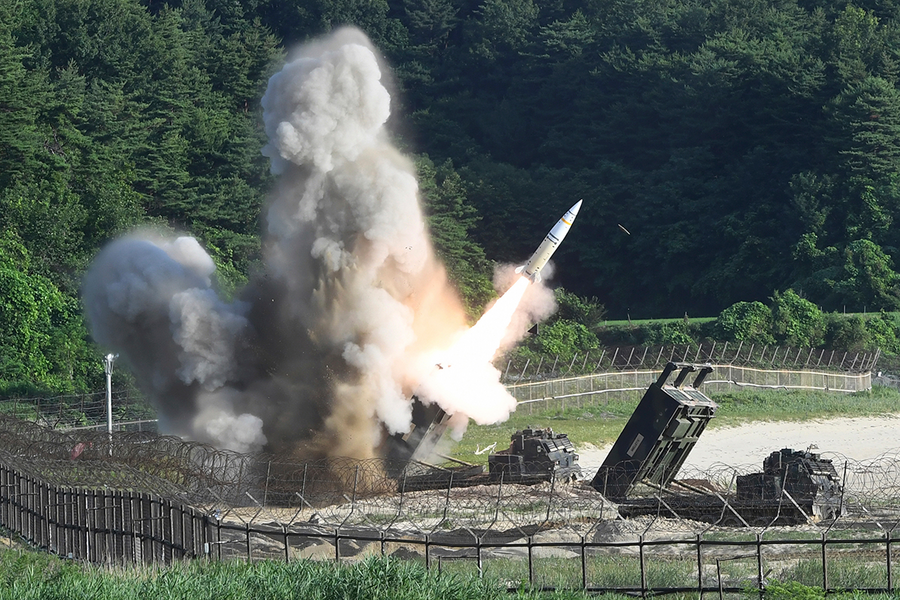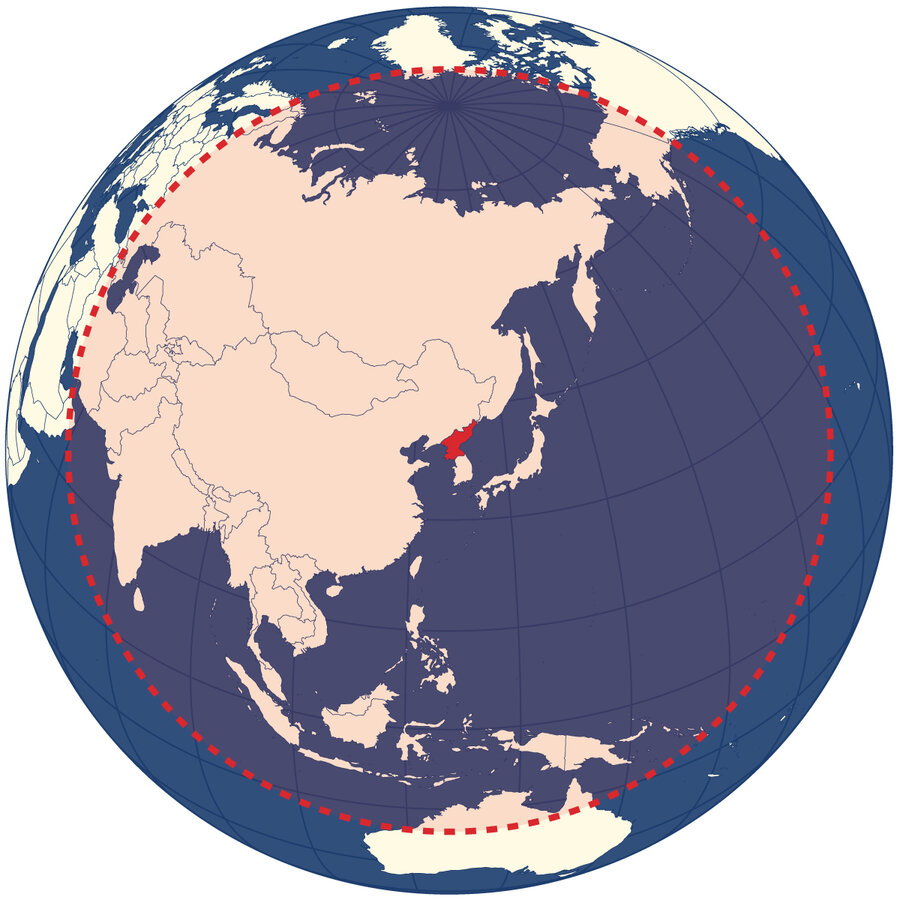North Korea missile test: How big a technological breakthrough?
Loading...
Tensions mounted in Asia and around the world Wednesday as North Korean leader Kim Jong-un vowed that Tuesday’s Intercontinental Ballistic Missile launch was just the first of many “big and small ‘gift packages’ to the Yankees.”
Tuesday’s launch, North Korea’s most advanced missile test since Mr. Kim took power in 2011, lofted an Intercontinental Ballistics Missile (ICBM) 1,700 miles before it splashed down 580 miles away in the Sea of Japan.
China, North Korea's main ally, has expressed doubts about this missile's ability to cross continental boundaries. But US analysts say the missile's demonstrated height expands North Korea’s range capabilities beyond Asia to include parts of the Middle East, the northernmost regions of Australia, and the entire state of Alaska. Alaska's inclusion in that range is a particular milestone for the capital Pyongyang, as Kim has long set his sights on developing nuclear missiles capable of reaching the United States.
How realistic is the threat to the US?
Even with this latest success, the North Koreans do not yet appear to have the capability of reaching the continental US. And range potential is only one component of developing nuclear weapons that could threaten the United States. To do that, they would have to finalize development of a nuclear weapon small enough to be attached to an ICBM.
The North Koreans signed the Nuclear Non-Proliferation Treaty in 1985, but formally withdrew in 2003 after years of accusations that it was pursuing nuclear programs in violation of the agreement.
The country’s overt long-range missile testing began in 2006, and North Korea claimed to conduct a successful nuclear test later that same year. The next several years were marked by alternating declarations of additional nuclear tests and promises to freeze or dismantle the program.
The regime most recently promised to halt both long-range missile launches and nuclear activity at its main nuclear facility in February 2012. But by January 2013, North Korea’s National Defense Commission vowed to resume both programs in preparation for “an upcoming all-out action” against the US.
Pyongyang has since declared that it has the capability of reaching the US mainland and that it has developed a nuclear warhead small enough to be deployed on an ICBM. Neither claim has been confirmed by international authorities.
North Korea could, however, be just a few years away from breakthroughs on both fronts, according to current and former US defense officials. And a 2015 Johns Hopkins University report suggested that the North Koreans could command as many as 100 nuclear warheads by 2020.
Such projections took on new meaning with this week’s launch, which US Secretary of State Rex Tillerson called “a new escalation of the threat to the United States, our allies and partners, the region, and the world,” in a statement Tuesday.
How prepared is the US?
The United States isn’t waiting for confirmation that North Korea can target the mainland. A global network of sea-, land-, and space-based sensors constantly scan the skies for evidence of a potential launch against American targets, as The Christian Science Monitor has previously reported.
In the event that one of those sensors detects an attack, the US military has roughly three dozen rocket interceptors at the ready, with more scheduled to go online by the end of 2017 for a total of 44. These interceptors are designed to target and disrupt missile warheads mid-course.
This system is supplemented by the Terminal High Altitude Area Defense (THAAD), which can shoot down short- or medium-range ballistic missiles in the final stages of flight. The Navy’s Aegis cruisers and destroyers carrying interceptor missiles add a mobile layer of defense.
Together, these tools provide a patchwork defense system that, while extensive, is likely limited in efficacy. Testing has yielded just a 50 percent success rate in destroying moving targets. And the Union of Concerned Scientists cautioned in a 2016 report that the current ground-based defense system “is not on a credible path to achieving an operationally useful capability.”
Analysts at the Center for Strategic and International Studies (CSIS) in Washington have urged the US to expand its arsenal of ground-based interceptors to 80 by 2020. Sen. Dan Sullivan (R) of Alaska – the only US state currently within range of North Korean missiles – has joined those calls.
Enhanced US interception capabilities could deter North Korea from ramping up the threat to the point where the US feels it has no choice but to intervene militarily, he maintains.
“Having a robust missile defense will give the president more options and breathing room,” Senator Sullivan told the Monitor in May.
But what about South Korea?
While the US prepares for an as-yet-unrealized threat, the South Koreans (and the Japanese) have been living in the potential path of North Korean missiles for years, though there have been significant questions about Pyongyang’s aiming capabilities.
The United States has worked closely with South Korea to defend against any potential attack from its northern neighbor. Some 28,000 US troops are currently stationed in South Korea, prepared to intervene should the North Korean’s attempt to cross the border and launch a ground war.
Periodic joint US-South Korean military exercises have angered North Korea. In the wake of Tuesday’s launch, China and Russia have called for an end to those exercises, saying they exacerbate tensions, but the US and South Korea appear determined to continue unabated.
On Tuesday evening, the US and South Korea militaries launched two missiles with "deep strike precision capability" into South Korean waters to demonstrate the two countries' solidarity, defense officials said.
"We remain prepared to defend ourselves and our allies and to use the full range of capabilities at our disposal against the growing threat from North Korea," Pentagon spokeswoman Dana White said in a statement.
Last year,South Korea, under then-President Park Geun-hye, agreed to deploy a US-made THAAD system to defend against North Korean missiles. Ms. Park, however, was impeached and removed from office earlier this year. Her successor Moon Jae-in, who has advocated for dialogue with the North, suspended further deployment of THAAD last month. Two launchers and additional equipment that had already been deployed will remain in place, but the deployment of four additional launchers will await review.







